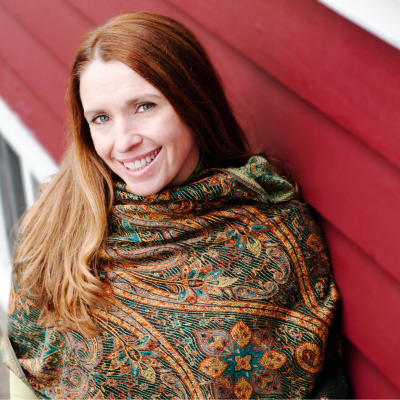4 Cadal Ciarach Mo Luran
Cadal Ciarach Mo Luran
Robyn Carrigan
Activity Summary
This sweet amusing three line lullaby introduces the topic of cattle droving and builds confidence and pronunciation skills for beginner level students from age seven to adult. The small vocabulary is not difficult to quickly memorize and provides an opportunity to work on pronunciation of broad and slender r sounds and aspirated c with a broad vowel (e.g. –ach).
Learning Outcomes
Students will:
- Build confidence in acquiring a complete song;
- Gain facility with broad and slender r’s and broad ch’s;
- Learn about cattle droving and facets of the historical Gaelic economy;
- Acquire vocabulary.
Gaelic Level
Suitable for ages seven years to adult and for any language level.
Lesson Preparation
The song may be shared in advance of the lesson, although this is not required as the song is only three lines.
The pronunciation files may best be reviewed with the instructor present to help secure pronunciation, and then shared with students after as a guide, depending on the level of the learners.
Print the materials and song sheets or provide access to digital copies.
Resources Required
- Clear, high-quality audio speakers
- Device (e.g., computer, tablet, phone) to access files
- Internet connection to play Youtube videos and pronunciation files
- Printer for sheets or materials (but these may also be accessed digitally)
- Whiteboard or similar is useful to display the three lines of lyrics
Lesson Structure (30 minutes)
| Time | Activity | Resources |
| 10 mins |
Working on pronunciation. Although this song is simple it provides an opportunity to enjoy some of the features of Gaelic language consonants. A light-hearted and encouraging approach can be very successful especially when working with beginner students, such as broad and slender R sounds. R’s at the beginning of a word, or found as RR elswhere, are generally rolled: R’s next to Broad Vowels within a word (i.e. A, O, or U):
Gaelic R’s that are not at the beginning of a word and are next to the vowels A, O, or U are considered BROAD. They are lightly tapped. The tongue taps the roof of the mouth behind the teeth. In ciarach and luran we use the tongue to add a quick R. Gaelic sounds – Pronounce a non-initial Broad R (00:00 – 00:56) R’s with Slender Vowels (i.e. E and I):
Gaelic R’s that are not at the beginning of a word and that are next to the vowels E or I are considered SLENDER. The R next to a slender vowel is softened and in some dialects resembles an airy English ‘th’ sound. Gaelic sounds – Pronounce Slender R 00:56 Gaelic CH, with Broad Vowels: A, O, or U:
This sound comes out of the back of the mouth and has been described as the sound a cat makes coughing up a hairball. Have the class all try like a cat. Be silly and use exaggeration. The sillier the better! |
Full pronunciation with a variety of speakers:
Pronunciation Resources:
|
| 13 mins | Singing the song. Lyrics below.
|
Song sheets, sheet music, Sol-fa, Song Videos:
Teaching Examples: Examples of full song performance:
|
| 7 mins | History of the Cattle Drovers. Discussion of the economy of Highland society. | Resources and Links: |
Variations
The lesson easily expands to a longer lesson of 45 or 60 minutes by adding more time in the pronunciation, acquisition, or the Drovers section of the lesson. The pronunciation component can easily expand with the use of the sample files provided. Create a shorter lesson by removing the History or Pronunciation component, or focus solely on Acquisition.
For example: 45 Minute Lesson
| 15 mins | Working on pronunciation |
| 15 mins | Acquiring the song |
| 15 mins | History of the Cattle Drovers. Discussion of the economy of Highland society |
Other Options:
- Advanced: Compose three new lines in Gaelic suitable for a lullaby.
-
Beginner Junior: Divide the lesson into two parts and learn the first two lines in Lesson 1, adding the third in Lesson 2.
Preparing for Challenges
- Student Hesitancy: Warming up the students’ voices readies them for singing, providing physical and mental ease and confidence. Humming works! Here is a classic vocal warm-up: How to do the Lip Trill
- Pronunciation: Use the call-and-response method with the teacher modeling the correct pronunciation and one student echoing the word or phrase, then re-model and select a different student to echo. You can check how the students are doing in a gentle, immersive manner.
Further Reading
Haldane, A.R.B. 1952. The Drove Roads of Scotland. Edinburgh: Thomas Nelson.
Witherspoon, Kelly A. 2020. “Scottish Cattle Companies on the Western Frontier.” Bound Away: The Liberty Journal of History 3(2). Available online.
Lyrics
In the video below the melody of the song is taught at the beginning of the video. At 1:09 the lyrics and melody are provided.
Cadal Ciarach Mo Luran – 0:00 PIANO ONLY/ 1:09 PIANO/SUNG LYRICS
CADAL CIARACH MO LURAN
The simple song structure consists of three verses. Each verse has four lines, the first one repeats three times with a different line for the fourth.
Cadal ciarach mo luran,
Cadal ciarach mo luran,
Cadal ciarach mo luran,
Bidh mi-fhìn agad tuilleadh.
Bidh mi-fhìn agad tuilleadh,
Bidh mi-fhìn agad tuilleadh,
Bidh mi-fhìn agad tuilleadh,
Chan fhaigh dròbhair a’ chruidh thu.
Chan fhaigh dròbhair a’ chruidh thu,
Chan fhaigh dròbhair a’ chruidh thu,
Chan fhaigh dròbhair a’ chruidh thu,
Bidh mi-fhìn agad tuilleadh.
Repeat Verse 1
Sleep (in) twilight my darling
I will be with you always
The drover of cattle won’t get you


